Recap of 2023: Updates to Common Electromagnetic Compatibility Standards
In the ever-evolving realm of Electromagnetic Compatibility standards, 2023 has proven to be a pivotal year marked by significant updates that shape the way industries navigate the intricacies of electronic devices. From modular approvals to refined specifications, the amendments introduced in 2023 underscore the industry’s commitment to staying up to date with technological advancements.
1. FCC Modular Approval updates
- In October 2023, several noteworthy updates were made to modular approval requirements, particularly regarding host integrator responsibilities. The update clarifies several aspects of modular approvals for both module vendors and host integrators.
2. FCC 15.255 Change:
- Significant modifications to the rule requirements for various devices occurred under FCC 15.255. New opportunities for devices in the 57-71 GHz range were opened which previously required FCC waiver. New measurement procedures have also been adopted. Specific limitations remain applicable for certain types of devices..
3. RSS-247 Canadian Publication:
- As of August 3, 2023, a new version of RSS-247 became mandatory six months from its publication date. The update provides clarification on the dual applicability of RSS-248 and RSS-247 for devices operating under both standards. This primarily applies to devices employing WiFi 6e in the bands above 5850 MHz.
4. RSS-252 Intelligent Transport Systems:
- Updated in October 2023, RSS-252, focusing on Intelligent Transport Systems, incorporated new sections on C-V2X (Cellular Vehicle-to-Everything) communication. This expansion caters to the communication needs of vehicles with other infrastructure.
5. RSS-102 Nerve Stimulation Measurement Procedure, SPR-002
- In October, the revised version of SPR-002 for nerve stimulation testing became mandatory for all devices operating between 3kHz and 10MHz. Numerous procedural changes became effective, as well as removal of relaxation factor for E-Field.
6. RSS-102 – Series Rewritten.
- In mid-December 2023, the entire series of RSS-102 RF exposure requirements was re-issued, separating the standards into various aspects and consolidating test procedures into the standards. This process was intended to clarify applicability of requirements. In general, the reorganization adopts all content previously contained within existing standards and procedures; ISED reports no intended major changes to regulatory requirements with the release of these standards, however has incorporated a 12-month transition period for implementation.
7. Korea’s Adoption of KSC 9832 (Equivalent to CISPR32):
- Korea adopted a new version of KSC 9832, equivalent to CISPR32, published on January 9, 2023. The RRA Announcement 2023-68 in August incorporated these updates, aligning more closely with CISPR32: 2015 + A1. Notably, emissions testing at 3 meters for “small equipment” is now permitted.
8. Korea’s Medical Testing Standard – KSC IEC 60601-1-2:
- Korea allowed medical testing at 3 meters under KSC IEC 60601-1-2, with the current adopted version being the 2012 edition.
9. EN 301 489-3:
- In January 2023, EN 301 489-3 underwent numerous changes, particularly focusing on performance monitoring criteria for the equipment under test. As a result, many devices may require reassessment to ensure compliance with the updated standard.
10. ISO 7637-1 General Setup and Definition:
- The General Setup and Definition section of ISO 7637-1 underwent an update in December 2023, refining and enhancing its specifications.
11. ISO 80601-2-55:
- A new version, Amendment A1 2023, was released for ISO 80601-2-55, introducing updated specifications and requirements.
Need consultation or a quotation for your project? Get in touch with us today to speak with the EMC Testing experts.


